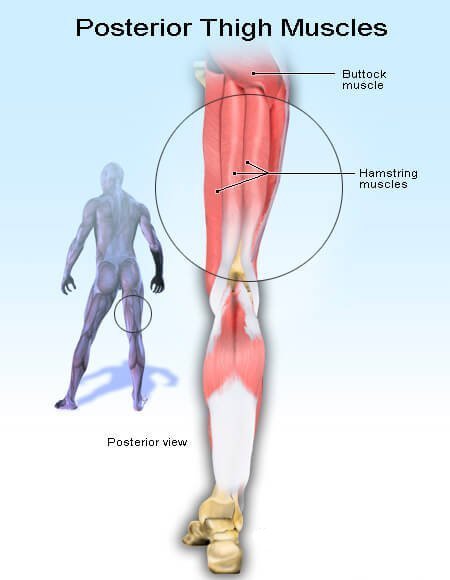We have heard about sport athletes pull their hamstrings during sport events, but some sport lovers don& #39;t know much about it.
[A THREAD]!
[A THREAD]!
What Are The Hamstrings?
The hamstrings are tendons that attach the large muscles at the back of the thigh to bone. It has become common in layman& #39;s terminology and some medical personnel to refer to the long muscles at the back of the thigh as "hamstrings".
The hamstrings are tendons that attach the large muscles at the back of the thigh to bone. It has become common in layman& #39;s terminology and some medical personnel to refer to the long muscles at the back of the thigh as "hamstrings".
Academic anatomist refer to them as the posterior thigh muscles, and more specifically as the biceps femoris muscles. These muscles span the thigh, crossing both the hip and the knee. They begin at just below the buttocks, arising from tye bone on which we sit.
They connect by...
They connect by...
What are the functions of Hamstrings?
The hamstring muscles actively bend the knee. They act to straighten or extend the hip(as in motion of moving thigh backward). The hamstring muscles are not very active with normal walking or standing. However, they are extremely important...
The hamstring muscles actively bend the knee. They act to straighten or extend the hip(as in motion of moving thigh backward). The hamstring muscles are not very active with normal walking or standing. However, they are extremely important...
...in power activities such as running, jumping and climbing.
Thus, sedentary individuals can get by with quite weak hamstrings, whereas athletes are very physically active individuals absolutely depend on healthy, well-conditioned hamstrings.
Thus, sedentary individuals can get by with quite weak hamstrings, whereas athletes are very physically active individuals absolutely depend on healthy, well-conditioned hamstrings.
What causes hamstring injuries, and the grade of hamstring injuries?
Hamstring injuries are muscle strain injuries. Hamstring injuries typically are caused by rapid acceleration activities wheh running or initiating running activity. The injuries are common in sports such as...
Hamstring injuries are muscle strain injuries. Hamstring injuries typically are caused by rapid acceleration activities wheh running or initiating running activity. The injuries are common in sports such as...
...soccer, football and track.
Injuries to the hamstring group of muscles can range from a minor strain to a major rupture.
A minor strain of the muscle fiber is classified as a grade I tear, Grade II is called partial tear of the muscle and Grade III is a complete tear of...
Injuries to the hamstring group of muscles can range from a minor strain to a major rupture.
A minor strain of the muscle fiber is classified as a grade I tear, Grade II is called partial tear of the muscle and Grade III is a complete tear of...
...the muscle, it should not be suprising that grade III injuries frequently occur in the athletically active.
What are the signs of injury to the Hamstring muscles?
The injuries usually occur with sudden running or jumping resulting in muscle injury.
Often times a pop is felt by the injured athlete. A variable amount of pain is experienced immediately. The athlete is usually unable to...
The injuries usually occur with sudden running or jumping resulting in muscle injury.
Often times a pop is felt by the injured athlete. A variable amount of pain is experienced immediately. The athlete is usually unable to...
...continue and often times cannot even stand.
Examination of the individual with a hamstring injury reveals spasm, tightness and tenderness. With more severe injury, swelling and black blue appearance will follow.
[END OF THREAD]!
Examination of the individual with a hamstring injury reveals spasm, tightness and tenderness. With more severe injury, swelling and black blue appearance will follow.
[END OF THREAD]!
#Cristiano #Dembele #pulisic #EPL #UEL  https://abs.twimg.com/hashflags... draggable="false" alt=""> #UCLisback
https://abs.twimg.com/hashflags... draggable="false" alt=""> #UCLisback  https://abs.twimg.com/hashflags... draggable="false" alt="">.
https://abs.twimg.com/hashflags... draggable="false" alt="">.

 Read on Twitter
Read on Twitter


